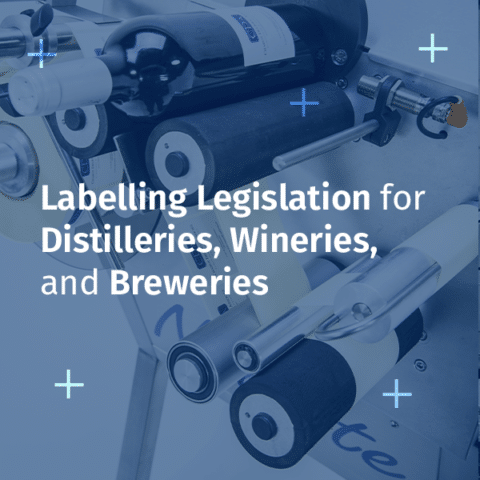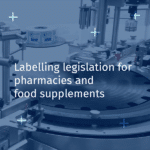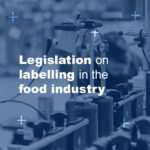In the complex world of alcohol and spirits production as well as marketing, adherence to legislation is crucial. For distilleries, wineries, and breweries, knowing and understanding regulations ensures regulatory compliance and fosters consumer trust.
1. Alcoholic Beverage Labelling Legislation
Alcohol labelling is governed by numerous laws and regulations issued by national authorities (such as the National Public Health Agency and the Ministry of Agriculture and Food), as well as international bodies (such as, the World Health Organization and the International Organization for Standardization, ISO).
These authorities provide guidelines and standards on various aspects of labelling, such as mandatory information to include on labels, permitted claims, and health warnings.
1.1 Importance of Label Compliance with Legislation
Compliance with labelling legislation is important for several reasons:
- Legal Compliance: Manufacturers must comply with their country’s laws and regulations as well as international standards.
- Consumer Protection: Labels provide consumers with information (such as content, ingredients, allergens, and country of origin) to make informed choices.
- Consumer Trust: Transparency and accuracy in labelling, strengthen consumer confidence in the brand.
- Avoiding Fines and Sanctions: Non-compliance with the labelling legislation can result in fines, financial penalties, and sanctions.
1.2 Evolution of Labelling Legislation
Labelling regulations for alcoholic beverages evolve to meet changing market needs, technological advancements, and growing concerns about consumer health and safety. Changes may include new requirements for allergen information, nutritional values, health claims, and alcohol consumption warnings.
2. Labelling Standards for Distilleries
Each category of spirits is subject to specific labelling regulations, but there are also general requirements.
2.1 Mandatory Information
Spirit labels must include the following information:
- Product Name: The name of the spirit, such as “Scottish Whisky,” “Amber Rum,” “Premium Vodka,” and so on.
- Alcohol Volume: The alcohol by volume (ABV), it is to say the percentage present in the product.
- Country of Origin: The country where the spirit was produced or distilled.
- Alcohol Information: Warnings about responsible consumption, such as “Drink Responsibly.”
- Allergens: Ingredients that may cause allergies or food intolerances must be listed.
- Ingredients: A list of ingredients used, especially additives or artificial colorings.
- Producer Information: The name and address of the manufacturer or bottler.
- Batch Number: A unique identifier to trace the product back to its production batch.
2.2 Label Claims
Distilleries may include claims on the label to highlight unique features of their products, such as “Single Malt,” “Small Batch,” “Distilled in Scotland,” “Aged for 12 Years,” and more. It is important that these claims are true, verifiable, and compliant with legislation.
2.3 Labelling of Organic Products
For organic spirits, distilleries must comply with regulations on organic product labelling, including the use of the official organic logo, mention of the organic certification, and information about organic ingredients.
3. Labelling Standards for Wineries
Labelling regulations for wines are generally more complex than for spirits due to several factors:
- The diversity of grape varieties
- The various winemaking methods
- The multitude of appellations of origin
3.1 Mandatory Wine Label Information
Wine labels must include the following information:
- Product Name: The name of the wine, such as “Château Haut-Brion,” “Chardonnay,” “Côtes-du-Rhône,” and so on.
- Vintage: The year the grapes were harvested to produce the wine.
- Grape Variety: The type of grape used to produce the wine (Cabernet Sauvignon, Merlot, Chardonnay, etc.).
- Volume: The volume, as in the amount of wine in the bottle (in millilitres or litres).
- Alcohol Content: The alcohol by volume (ABV), it is to say the percentage present in the wine.
- Country and Region of Origin: The country and region where the grapes were grown and the wine was produced.
- Producer Information: The name and address of the winery.
- Allergens: Allergens (such as sulphites) must be clearly indicated.
- Alcohol Warnings: Warnings about responsible consumption.
3.2 Appellations d’Origine Contrôlée (AOC)
For wines with an Appellation d’Origine Contrôlée (AOC in french) also known as Protected Designation of Origin (PDO), regulations are particularly strict. Labels must indicate the wine’s appellation of origin and all specific mentions required by local regulations.
3.3 Labelling of Organic Wines
As with spirits, organic wines must be labelled in accordance with specific organic product regulations, including the use of the official logo, mention of organic certification, and more.
4. Labelling Standards for Breweries
Like other alcoholic beverages, labelling regulations for beers vary by country. They may include specific requirements concerning ingredients, claims, nutritional values, among other things.
4.1 Mandatory Information
Beer labels must include the following information:
- Product Name: The name of the beer (e.g., “IPA,” “Blonde Ale”).
- Beer Type: The category or style of beer (e.g., “Ale,” “Lager,” “Porter”).
- Volume: The volume / amount contained in the bottle or can (in millilitres or litres).
- Alcohol Content: The alcohol by volume (ABV), thus the percentage present in the beer.
- Allergens: Allergens present in the beer (like gluten).
- Producer Information: The name and address of the brewery or manufacturer.
- Country of Origin: The country where the beer was brewed.
4.2 Label Claims
Breweries can include claims on the label to highlight unique features of their products, such as “Craft Beer,” “Locally Brewed,” “Gluten-Free,” and more. As with spirits and wines, it is important that these claims are true, verifiable, and compliant with current legislation.
4.3 Labelling of Craft Beers
Craft beers have become popular in recent years, with many breweries specialising in high-end craft beers. Labelling regulations for craft beers vary by country and may include specific requirements for ingredients, production methods, appellations, etc.
5. Technology for Labelling Legislation Compliance
Compliance with legislation can be challenging, especially as regulations evolve and become more complex. To ensure regulatory compliance, many companies turn to CDA’s filling, capping, and labelling machines.
5.1 Filling Machines
CDA’s semi-automatic and automatic filling machines offer an efficient and precise way to fill bottles of spirits, such as rum, gin, or whisky. Designed to accommodate a variety of formats, our machines can be programmed to accurately dose the required quantity into each container.
K-Net Auto: The Automatic Filler
The K-Net Auto, is an innovative automatic filler, ideal for distilleries looking to optimise their production process. It enables quick and precise filling of various types of spirits. This machine can fill up to 1200 bottles per hour, depending on the viscosity of the liquid and the type of bottle used.
The K-Net Auto is equipped with volumetric and flow metre dosing systems, ensuring exceptional filling precision. Its modular design allows easy adaptation to different bottle formats, making this machine extremely versatile. Moreover, its intuitive user interface facilitates settings and adjustments, minimising downtime and increasing overall efficiency.
5.2 Capping Machines
CDA’s capping machines are used to apply and tighten caps or corks on bottles quickly and professionally. These machines can be equipped with special capping heads to accommodate different types of closures, such as T-corks, which are common in the spirits industry.
VST: Automatic T-Head Cork Distribution and Insertion Module
The VST module is an all-stainless-steel linear solution designed to automatically distribute and insert T-corks on bottles. This robust and high performance machine can reach a rate of 1800 corks per hour, depending on the type of cork used.
With the elevator included as per the standard, it offers better autonomy and simplifies the operator’s work, making the process more efficient and less dependent on manual intervention. The VST module, with its ingenious design and high performance, is a major asset for any distillery looking to improve its capping process.
5.3 Labelling Machines
Labelling machines apply labels to bottles with precision and speed, ensuring product quality and brand appeal. Our machines can be equipped with different types of labelling stations to suit conical, rectangular, or oval bottles.
Ninon Mix: The Versatile Automatic Labeller
The Ninon Mix is a linear automatic labeller that allows adhesive labelling on the sides and top of square, cylindrical, oval, and conical products, without any material changes. This machine can apply up to 5 adhesive labels per product, with a labelling rate of up to 60 products per minute, depending on the packaging, product format, and various positioning options.
It stands out for its versatility and ability to handle a wide range of products. Despite its versatility, it remains easy to use and adjust, thanks to an intuitive touchscreen and the memory of 99 different heights.
5.4 Complete Line for Distilleries
CDA has developed a complete line specifically for the distillery industry, incorporating the K-Line S, VST, Cap System, and Ninon Mix machines. This configuration covers the entire conditioning process, from cork distribution to final labelling, through precise filling and capping.
Moreover, we can add other machines upstream or downstream of this line, such as a rinser at the beginning of the line to ensure bottle cleanliness before filling, or marking solutions to customise bottles with specific codes or information. This flexibility allows for the creation of a production line perfectly adapted to the specific needs of each distillery.
5.5 Advantages of CDA’s Machines
CDA’s machines offer several advantages for distilleries, wineries, and breweries:
- Precision: CDA’s machines are designed to condition bottles with precision and simplicity, ensuring product quality.
- Versatility: CDA’s machines are designed to accommodate a variety of bottle formats, offering great flexibility.
- Compliance: The machines are equipped with advanced features to ensure compliance with labelling legislation, such as label customisation, data management, and traceability.
In conclusion, compliance with legislation is essential for distilleries, wineries, and breweries to ensure transparency, safety, and consumer trust. By staying up-to-date with standards and using CDA’s filling, capping, and labelling machines, manufacturers ensure regulatory compliance and operational efficiency for their products.
For more information on CDA’s filling, capping, and labelling machines, contact our team today via our contact form.











